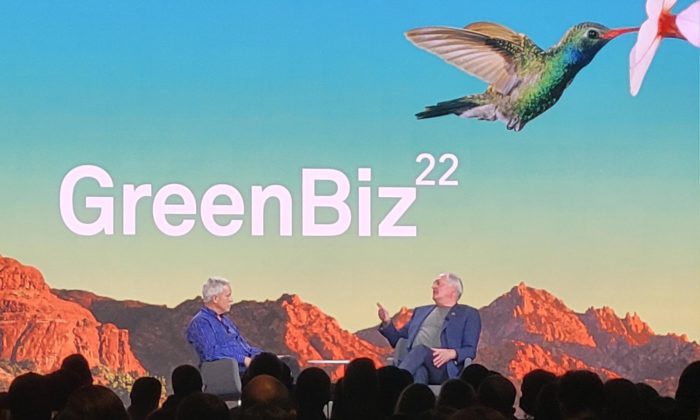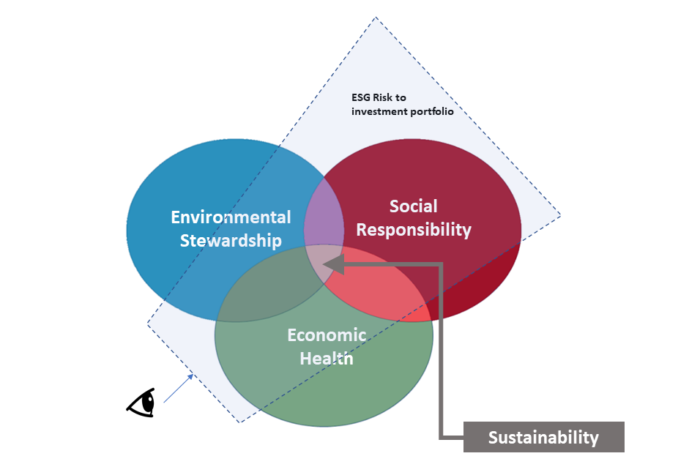A few weeks ago we had the pleasure of being immersed in the latest trends, technologies, and opportunities at GreenBiz 22. After engaging with clients, peers, and other sustainability leaders from a broad swath of industries and geographies, we left feeling energized about the developments we’re seeing in the sustainability and environmental, social, and governance (ESG) arena.
It’s important to acknowledge what a massive event GreenBiz has become, and while it’s impossible to attend every session and capture every exciting idea here, we were able to nail down a few major takeaways. A critical theme we recognized throughout the event — and one that mirrors our experience in sustainability and ESG strategy — is that while so many of our companies have identified sustainability as a definitive value and goal, how we achieve that is complex and unique to each organization. The lack of a one-size-fits-all solution makes it even more powerful to engage in the kind of knowledge-sharing we found at GreenBiz.
Adopting a net-positive attitude
Net zero has long been a buzzword in corporate sustainability, and in his keynote address at GreenBiz 22, Paul Polman acknowledged its inadequacy and the urgency of doing better than neutral. A sustainability thought leader and former Unilever CEO, Paul argues that businesses committed to not only offsetting their negative social environmental impacts, but also to giving back more than they take are the key to a better future. Furthermore, he asserts that businesses can and should thrive as a result of these commitments.

His quick and engaging session resonated with attendees, many of whom are already engaged in pushing the needle of ESG past zero in their organizations and the industry. In line with other shifts in the business of sustainability, we see businesses reaching beyond the scope of greenhouse gas emissions. Polman says net positive companies adopt five core tenets:
- Ownership of all impacts and consequences, intended or not
- Operating for the long-term benefit of business and society
- Creating positive returns for all stakeholders
- Driving shareholder value as a result, not a goal
- Partnering to drive systemic change
Put simply, Paul believes the standard we previously held for “good enough” corporate stewardship is no longer good enough. His keynote provoked great conversations about how companies can mobilize to drive meaningful change for communities, the environment, and business.
Environmental Stewardship and Beyond
An evolution in the language of sustainability was palpable this year. Many of the speakers we heard and conversations we held centered ESG. Considering non-environmental impacts as part of corporate sustainability isn’t exactly a new concept, but business continuity issues resulting from supply chain and workforce disruptions brought about by the Covid-19 pandemic drove home the interconnectedness between our environmental, social, and governance practices. Thanks to this reckoning the idyll country road to broader adoption of ESG as a sustainability structure has become a veritable autobahn.

Many discussions incorporated impacts to communities, particularly those disproportionately affected by negative environmental, social, and financial impacts of corporate and government actions. With these inequities under closer scrutiny, businesses are looking for more concise ways to quantify and mitigate them and regulatory bodies are increasingly requiring that they do so.
By acknowledging and quantifying these impacts, we unavoidably invite greater external scrutiny. From an investment standpoint this creates a more nuanced framework for financial risk. Investors more broadly require quantifiable evidence that businesses are operating in ways that minimize environmental impacts and optimize positive outcomes in their communities.
Standardizing ESG Reporting
In line with quantifying our ESG outcomes, one of the best attended sessions of GreenBiz 22 was ESG Standards: The State of Play. This energetic panel discussion was presented by Tim Mohin, sustainability leader at Persefoni and former head of the Global Reporting Initiative (GRI), Katie Schmitz Eulitt, a strategic advisor to the Sustainability Accounting Standards Board (SASB), and Paul Dickinson, founder of CDP.
The discussion centered on the standardized ESG reporting framework slated for release this month by the International Sustainability Standards Board (ISSB), a standards-setting board created by the International Financial Reporting Standards Foundation (IFRS). According to IFRS, “The intention is for the ISSB to deliver a comprehensive global baseline of sustainability-related disclosure standards that provide investors and other capital market participants with information about companies’ sustainability-related risks and opportunities to help them make informed decisions.”
Despite this move to consolidate standards into a comprehensive global framework, it seems unlikely other frameworks will fade out entirely. A significant number of companies utilize the GRI framework and during the panel discussion, Tim posited these businesses will likely continue to do so.
We’re inclined to agree with him. While ISSB presents a comparable set of reporting requirements — that is, what companies need to report on — the process and formulation behind them is less rigid than in GRI disclosures. The ability to choose one or multiple disclosure frameworks allows businesses to construct reports that meet the needs and expectations of a broader spectrum of stakeholders.
All of this further affirms the complexity of sustainability and the importance of embracing a strategy tailored to your business’ strengths challenges, and desired outcomes. Our clients, like all businesses engaged in this work, are invested in maximizing stakeholder confidence, optimizing their capital spend, and maintaining business continuity in the context of a changing climate. We’re helping them select and optimize the right reporting frameworks; craft, measure, and achieve their sustainability goals; and assess and reinforce their assets and supply chains against climate-related risks. We’d love to help you next.
